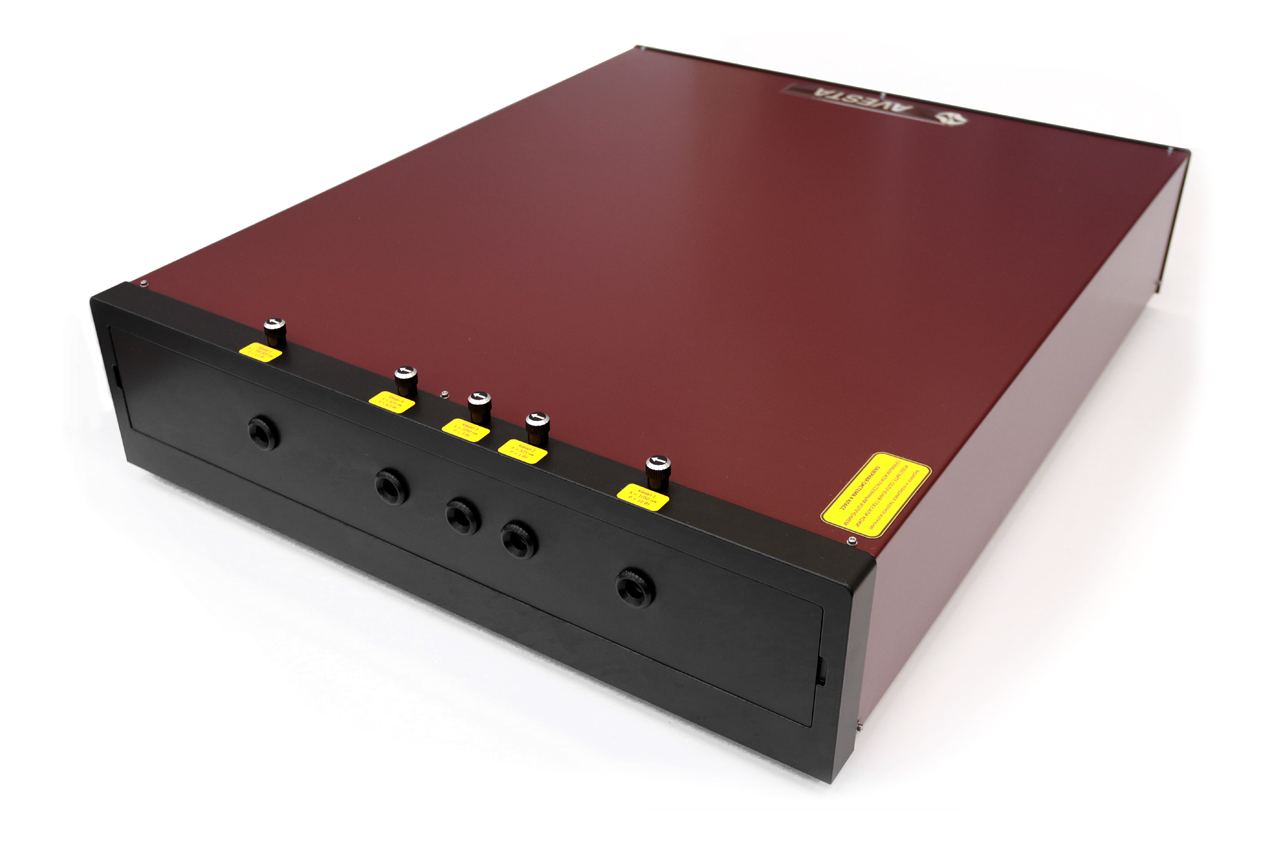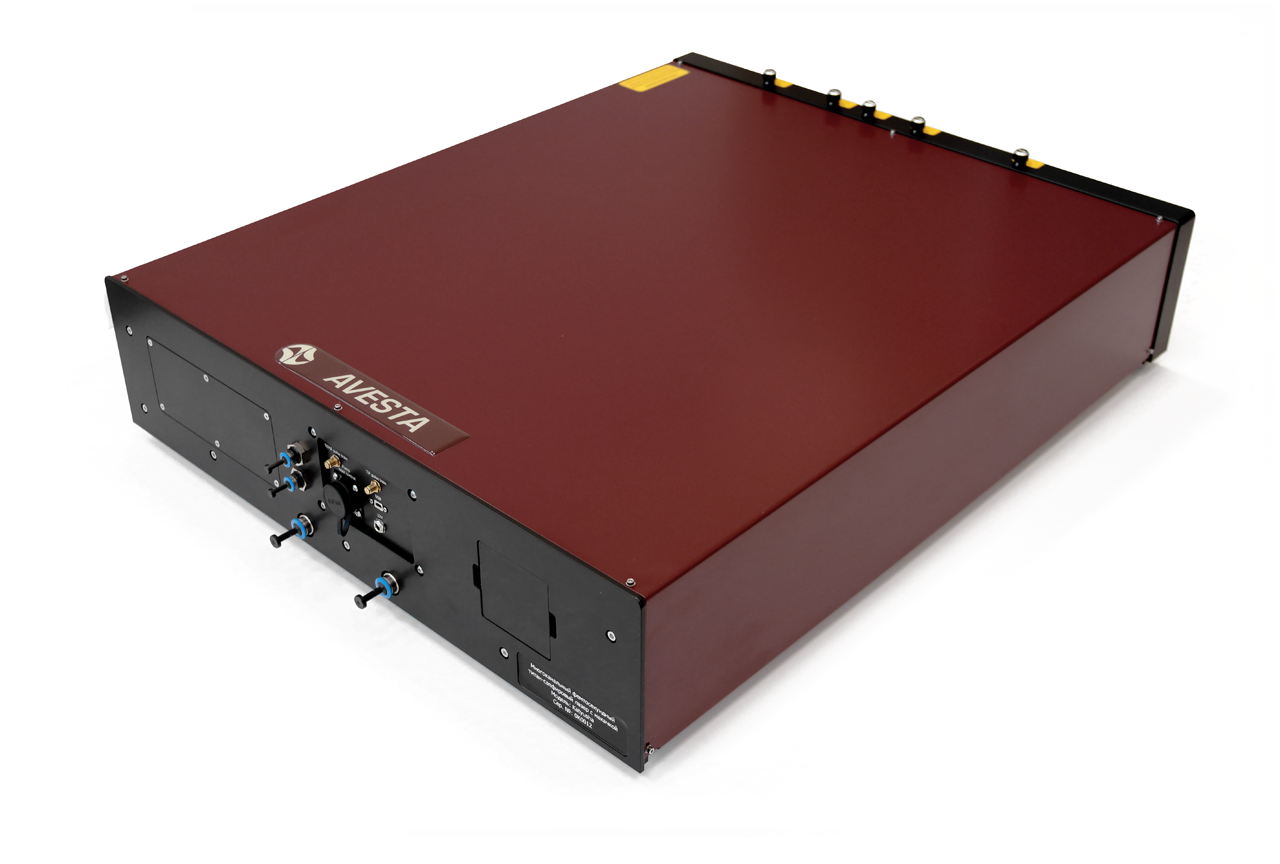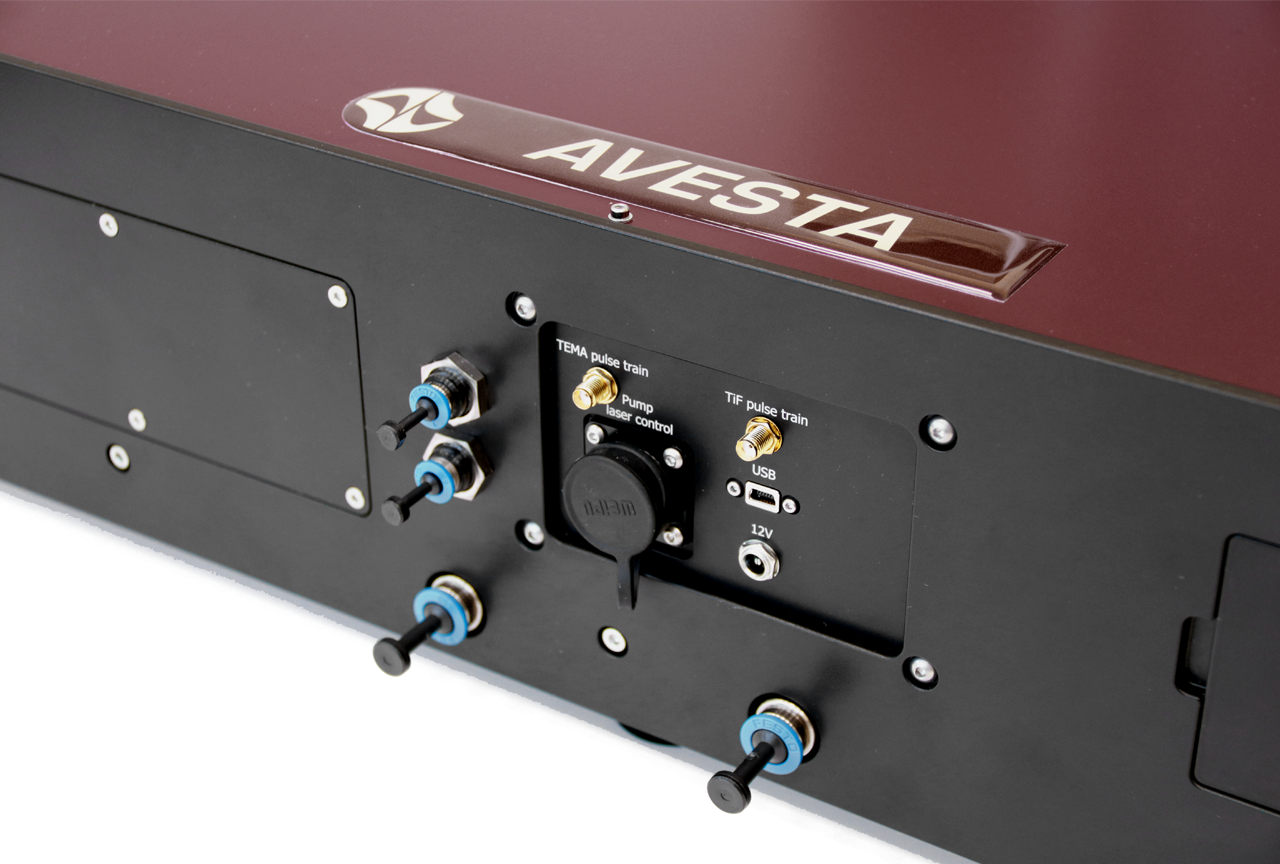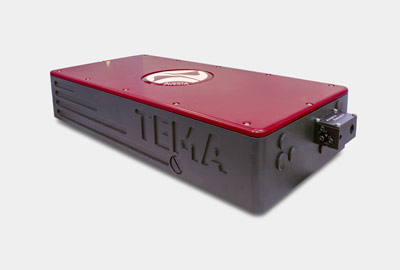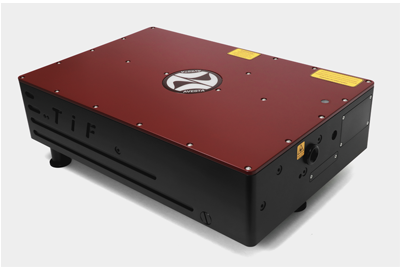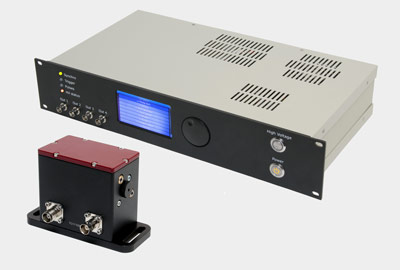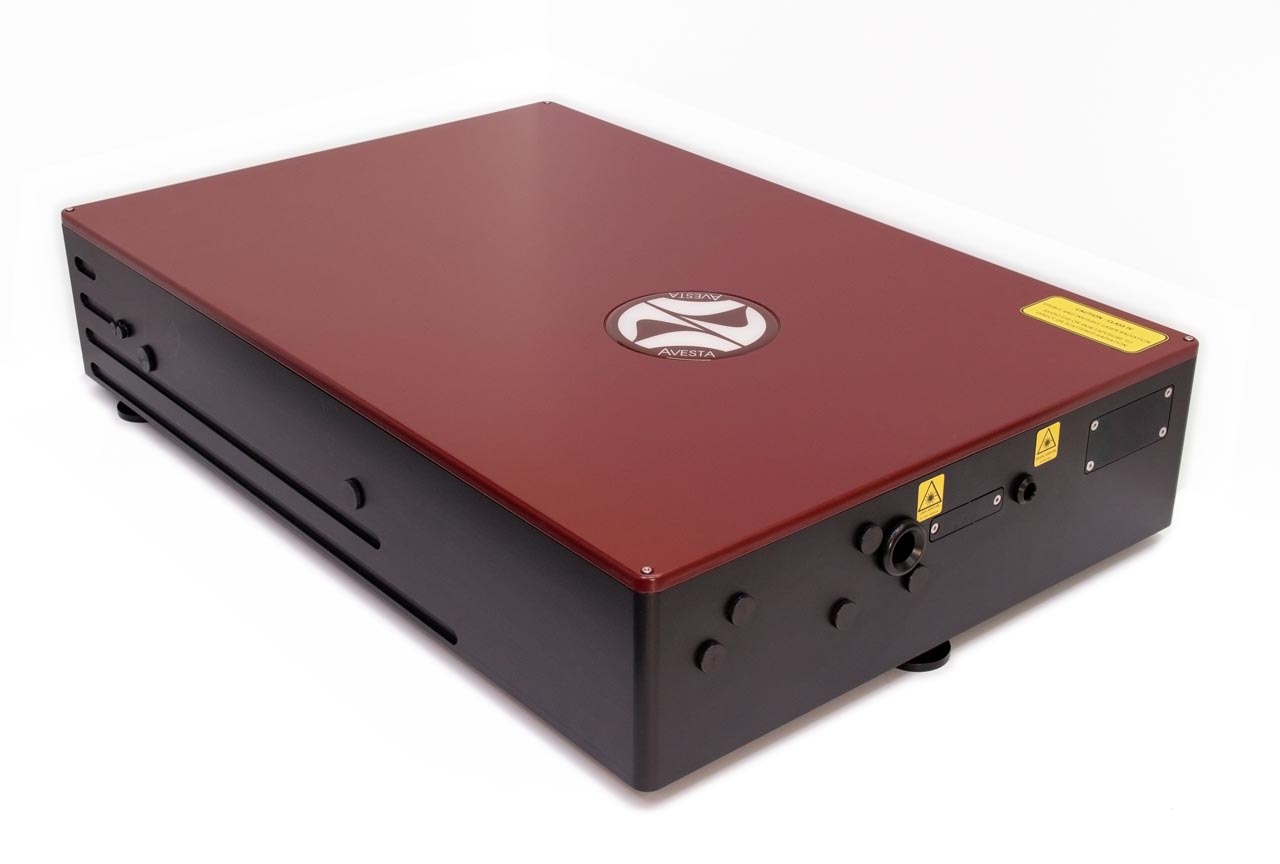Tricolor. Multi-Channel Femtosecond Solid-State Laser
| Channel 1 (1050 nm) | Channel 2 (525 nm) | Channel 3 (~800 nm) | |
| Output power (Ch 1 only) | >6 W | N/A | N/A |
| Output power (Ch 1 + Ch 2) | >1 W | >3 W | N/A |
| Output power (Ch 1 + Ch 2 + Ch3) | >1 W | >0.3 W | >0.3 W |
| Output pulse duration1) | <200 fs | <150 fs | <100 fs |
| Pulse repetition rate (fixed) | 80 +/- 5 MHz | ||
| Central wavelength | 1050+/-5 nm (fixed) | 525+/-5 nm (fixed) | 800+/-50 nm |
| Spectrum width (FWHM) | >7 nm | >6 nm | > 10 nm |
| Relative Timing Jitter2) | < 10 fs | ||
| Beam mode | TEMoo | ||
| M^2 | <1.1 | <1.2 | <1.2 |
| Beam diameter (at 1/e^2) | 1+/-0.2 mm | <2 mm | <2 mm |
| Output polarization | linear, horizontal | linear, vertical | linear, horizontal |
| Beam divergence | <1.8+/-0.3 mrad | <2.0+/-0.3 mrad | <1.0+/-0.3 mrad |
| Beam asymmetry | <10% | ||
| Beam astigmatism | <10% | ||
| Long-term stability3) | <0.3% rms | ||
| Cold start warm-up time | <20 min | ||
| Cooling Requirements | |||
| Laser Head | Closed-loop chiller included | ||
| Power Supply | Air cooled | ||
| Physical dimensions (L × W × H) | |||
| Laser head dimensions | 450 × 140 × 280 mm | ||
| Laser control unit dimensions | 290 × 200 × 80 mm | ||
| Closed-loop chiller dimensions | 430 × 340 × 190 mm | ||
| Umbilical length | 1.8 m | ||
| Environmental and utility specifications | |||
| Operating temperature | 18-28 °C | ||
| Relative humidity | <60%, non-condensing | ||
| Voltage | single-phase; 100-240 VAC; 50/60 Hz | ||
| Power consumption | <2 kW | ||
| 1) A sech2 pulse shape is used to determine the pulse duration. Measured with a Avesta AA-20DD autocorrelator; 2) Relative timing jitter between Channel 1 and Channel 3 measured within 1 Hz – 20 kHz bandwidth; 3) After 30 min warm-up with cold start, during 12-hour continuous operation under equal room temperature conditions using recommended stabilized closed-loop chiller with proper capacity; |
|||
The Tricolor Ultrafast Multi-Channel Laser System is a multi-wavelength femtosecond laser source. It combines three inherently synchronized laser outputs emitting three different wavelengths (1050 nm, 525 nm and ~800 nm). The system is based on the principle of synchronous pumping of a tunable titanium-sapphire laser with the frequency-doubled radiation of the TEMA ytterbium laser. The Tricolor laser system makes use of a non-linear interaction mechanism allowing for the precise synchronization of the three pulse trains, thus effectively equalizing their repetition rates [1]. The output beam selection system of the Tricolor is similar to that of the TEMA-DUO and allows the Tricolor system to simultaneously emit up to three spatially separated beams at different wavelengths, so that the following combinations are possible:
1) 1050 nm;
2) 1050 nm + 525 nm;
3) 1050 nm + 525 nm + (800 +/- 50) nm.
In the first mode, the Tricolor system is analogous to TEMA ytterbium solid-state laser emitting 6+ Watts of output power with emission spectrum centered at 1050 nm. In the second mode, a second harmonic generation module is introduced into the primary beam, followed by a beam splitter mirror redistributing the energy of the ytterbium laser and its second harmonic among two channels (at least 2W at 525 nm and 1W at 1050 nm). In the third mode, the frequency doubled emission of the TEMA laser is used to pump a titanium-sapphire laser, which results in one more beam with tunable wavelength (750 - 850 nm) at the system output. In this case, the average optical power of the residual 525 nm radiation is lowered to at least 300 mW, as is the ouput power of the titanium-sapphire laser (300 mW at 800 nm).
The patented [2] optoelectronic synchronization system used in the Tricolor system allows to maintain synchronous operation of the three channels with extremely low relative jitter (under ~10 fs) at any given wavelength of the third channel (Ti:S laser) for almost an unlimited period of time. In addition, the synchronization system provides fully automatic mode-locking behavior of the individual lasers, effectively allowing for the turn-key mode of operation of the entire system.
Multiple advantages of the Tricolor system make it an extremely versatile source of femtosecond pulses, excellent for multidisciplinary research laboratories, as well for scientific experiments in various spheres.
[1] Didenko N. V. et al. Quantum Electronics. 47 (1), 7-13 (2017)
[2] RU2639552C1
Related products
Latest News
Ti:S oscillator with up to 3 W output power at 100 fs
We have ramped up the maximum available output power for the TiF-100 series to more than 3 Watts at 800 nm, 100 fs, 80 MHz. The tuning range has also been extended to 720-950 nm, while an optional modification that covers 850-1040 nm is also available. The system features a high-power low-noise integrated DPSS laser […]
TiF-100ST-F6 femtosecond Ti:S oscillator with Frep locking for multiphoton microscopy at CANDLE, Armenia
The TiF-100ST-F6 femtosecond Ti:S oscillator with a built-in pump laser, also equipped with the ALock PLL electronics unit for pulse repetition rate locking to an external RF source has been installed at the Synchrotron Research Institute’s CANDLE facility in Armenia. The setup has been developed and commercialized during the joint Russia-Armenia project supported by FASIE (Innovation […]



